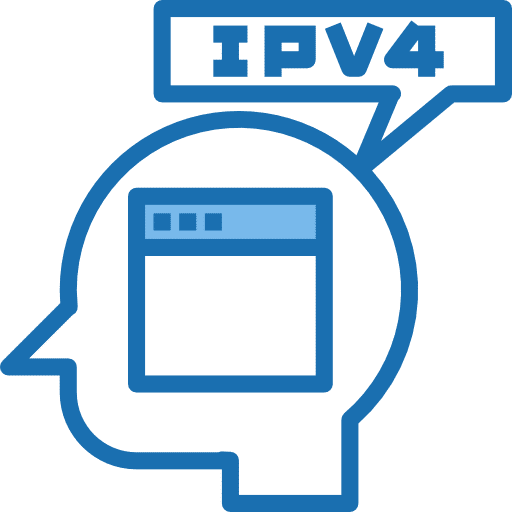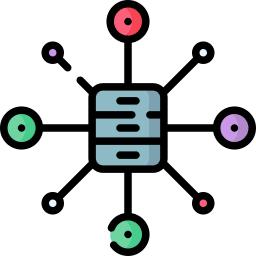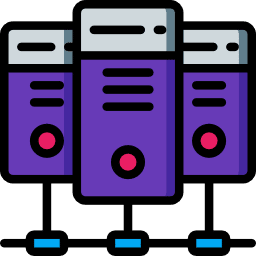Address
304 North Cardinal St.
Dorchester Center, MA 02124
Work Hours
Monday to Friday: 7AM - 7PM
Weekend: 10AM - 5PM

Proxies mediate between users and destination servers. They also hide users’ IP addresses, hence offering anonymity while browsing. On the internet, two types of proxies exist; IPv4 and IPv6 proxies.
The IPv4 proxy supports IPv4 IP addresses, while IPv6 supports IPv6 IP addresses and helps transition IPv4 addresses to IPv6. Despite IPv6 being the latest and high-performing IP standard, IPv4 is still the most widely used. Hence, it’s important to understand what an IPv4 proxy is and how it’s used.
IP addresses identify devices that connect to the internet. As a fundamental infrastructure of the internet, the long strings of numbers – and alphabets – facilitate communication between users’ devices and the internet via the transmission of information packets.
Inside each packet, there’s the data being transmitted. There’s also a packet header containing metadata – IP addresses of the sender device and the destination server.
IP addresses can either be private or public. Private IP addresses connect computers to a home network. Public IP addresses, on the other hand, connect home networks, devices, or a business network to the global internet. Internet Service Providers designate the public IP address of devices.
Internet service providers give what’s called dynamic IP addresses to their users. Using a dynamic IP address means a user’s IP address autonomously changes over time.
As against dynamic IP addresses, there are static IP addresses that don’t change. These are commonly found on websites. There are billions of IP addresses across the internet, each following the IPv4 or IPv6 standard.
IPv4 is the first public internet protocol, which uses 32-bit integers as addresses. The ‘v4’ in the name signifies that it’s the fourth version, with its first three precursors being test versions not released to the public.
Launched in 1983, IPv4 consists of three parts:

IPv4 has an address format that uses numbers divided into four groups separated by dots. An example of an IPv4 address is 12.233.232.156.
Essentially, each group of numbers can only have figures between 0 and 255. Hence, there can’t be more than 4,294,967,296 IPv4 addresses. This limitation necessitated IPv6.
IPv6 is the latest internet protocol version launched in 2012 and uses 128-bit hexadecimal notation rather than the 32-bit numerical notation of IPv4. As a result, IPv6 offers improved performance, simpler infrastructure, and lower costs.
However, IPv6 is still not as prevalent as expected – numerous devices still use the IPv4 standard. Therefore, IPv4 proxy is the most common from both the users’ and the providers’ perspectives.
An IPv4 proxy is an intermediate server that works with the IPv4 protocol standard. Here are some characteristics distinguishing it from IPv6.
Currently, the IPv4 standard is still the most widely used across devices connecting to the internet. Owing to this, IPv4 proxies are compatible with numerous utilities and services. In addition, the entire initial internet was built on the IPv4 protocol, so most hardware devices are compatible with it, with internet service providers developing measures to keep newer devices running on the protocol.
Furthermore, because of the global compatibility of IPv4 proxies, they are most suitable for residential purposes.
Due to the widespread usage of the protocol, support is ready on IPv4 proxies. As a result, the amount of support IPv4 proxies get is more than IPv6. As an old proxy system with lots of complexities, the need for support is commonplace with IPv4 proxies, and providers have been readily on hand.

IPv4 provides over 4 billion numerical addresses, serving as identifiers for devices and servers on private and public networks. Users get public IP addresses assigned by ISPs to access the internet through a router.
Website and online application owners have designated static IP addresses, which help client computers locate them. The server-side IP addresses, however, need another internet infrastructure called the Domain Name System.
The domain name system is an international database of domain names and IP addresses. Thanks to the compatibility of IPv4 with the DNS, users don’t need to type in the IP address of the website they mean to visit. Instead, typing in the domain name links the client’s computer to the server they wish to connect to.
Security is fundamental to global businesses. And IPv4 provides the needed infrastructure to meet these security needs. Though IPv6 tries to provide better security, IPv4 still functions properly, especially thanks to the improved data encryption technology.
The 21st-century business relies heavily on data, and IPv4 has been an infrastructure supporting data communication. The data communication needs are massive for companies, and IPv4 leverages its resources to make it easier.
If you’re interested to learn about use cases in-depth, click here on IPv4 Proxy to find out more.
IPv4 has proven to be a critical infrastructure, which remains popular despite introducing the much improved IPv6 protocol. Moreover, thanks to its extensive use cases, it’s safe to say IPv4 will be around for much longer.
You must be logged in to post a comment.
Thanks for explaining Ipv4 proxy, its usage, and services providers.